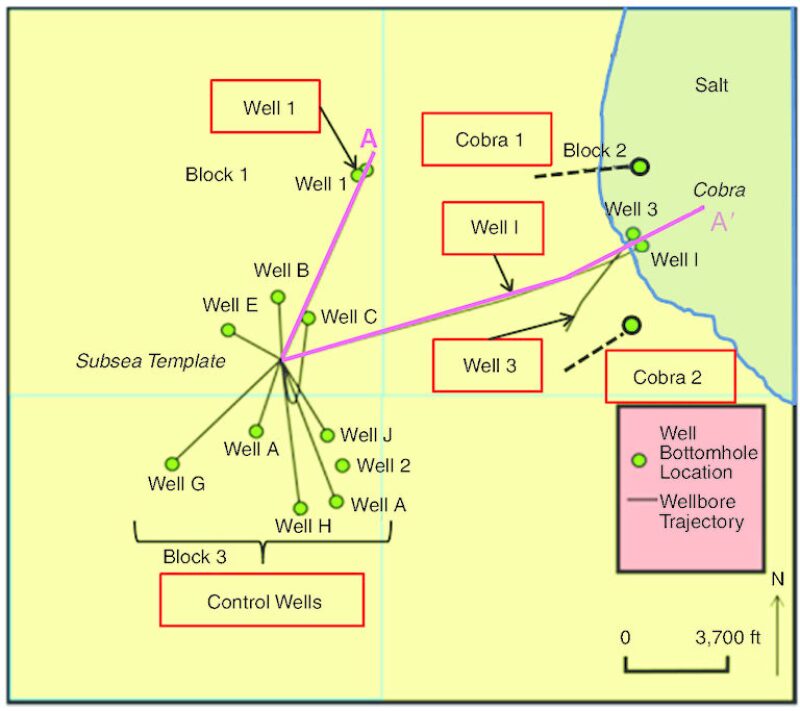The process of risk and uncertainty reduction in unconventional-drilling operations starts with improving techniques for pore-pressure modeling. A study conducted in a near‑salt field in deepwater Gulf of Mexico (GOM) that compared the accuracy of seismic-frequency- and seismic-interval-velocity-based methodologies showed significantly higher accuracy for the seismic-frequency-based approach in wells that were in near- or subsalt environments and higher overall accuracy for all wells.
Introduction
The current standard practice for modern pore-pressure prediction relies on interval velocities obtained through seismic surveys. The methodology has seen many changes, but transforms used for interval-velocity-based pore-pressure prediction are for the most part still heavily reliant on the assumption that the porosity trend is directly related to pore pressure. Also, rock velocities are highly dependent on factors such as lithology and porosity, which may have nothing to do with effective stress, the key factor that all pore-pressure models are designed to predict.


